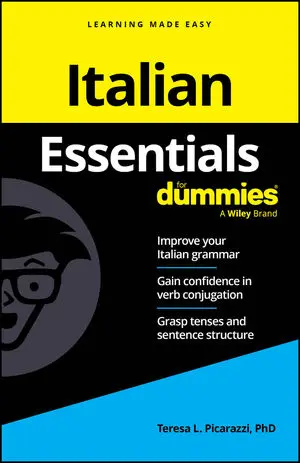Everyone knows at least one Italian word — apart from pizza, ravioli, and lasagna — and that word is ciao (hi, bye). You use it to say hello and good bye to friends and acquaintances.
Ciao is somewhat informal, and can be replaced by buon giorno (good day). You use this phrase for friends, as well, but also for strangers. When you walk into a shop, you address a buon giorno to the proprietor or clerks. Like ciao, buon giorno means both hello and good-bye.
Per favore (please), grazie (thank you), and prego (you're welcome) should be used liberally. They make you the considerate person you are.
To expand your Italian, you can use the following verb forms—all of which are followed by infinitives—to make your needs and wants and desires known. Think of the ten infinitives that you need to get through the day—for example, andare (to go); mangiare (to eat); comprare (to buy); parlare con (to talk to) —and use them in the following sentences:
Vorrei (I would like . . .)
Preferisco (I prefer . . .)
Devo (I have to . . .)
Posso (I am able to . . .)
So, non so (I know, I don't know how to . . .)
Ho bisogno di (I need . . .)
Ho voglia di (I feel like . . .)
As your vocabulary grows, you can beef up your sentences by adding descriptive words and details, but these basics will get you started.






